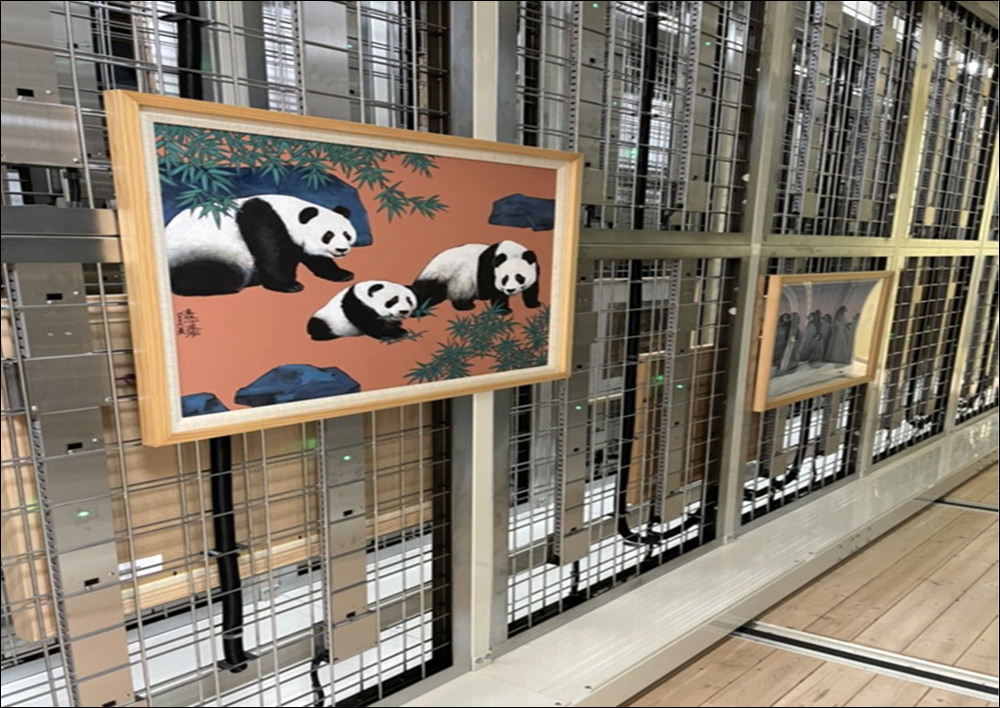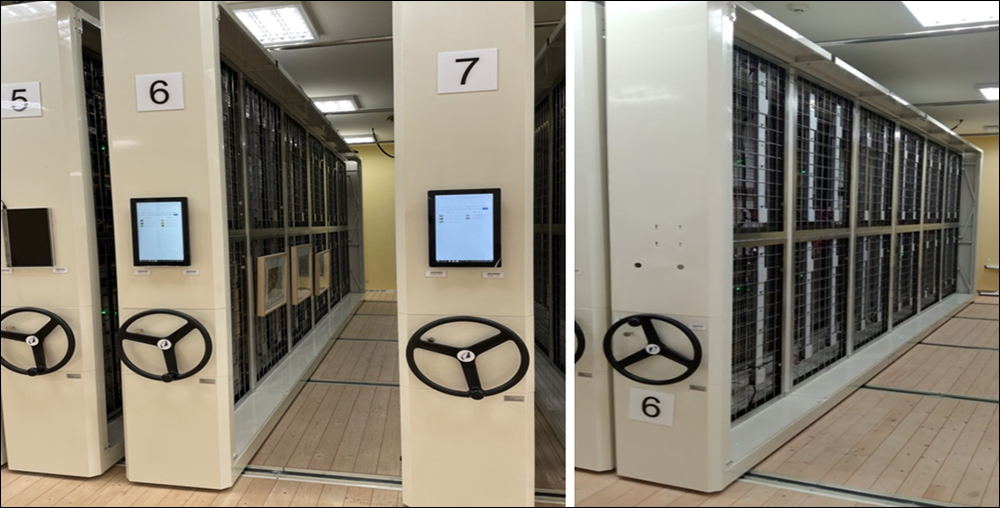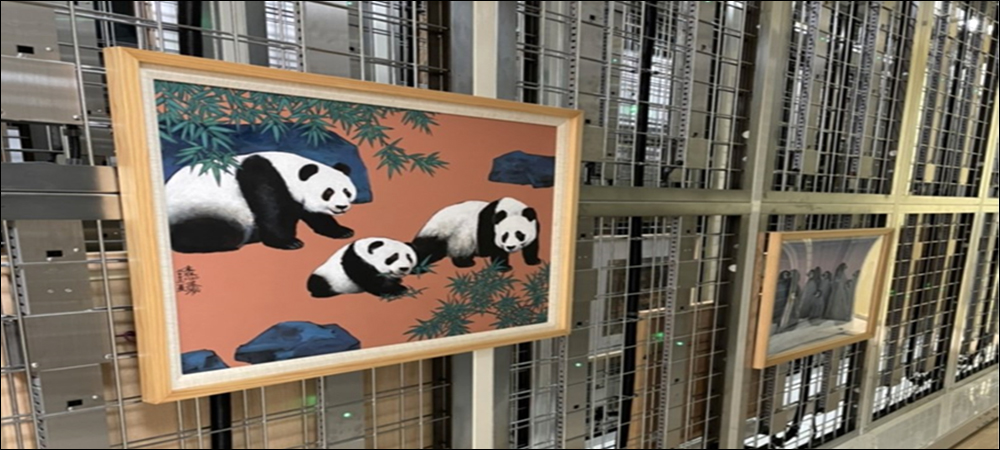- Building on Existing RFID Solution
- Gaining Real-Time Inventory Data in Warehouses
- Preventing Theft or Unauthorized Access
Nearly a decade after deploying a hybrid RFID system to manage its art collections, the National Taiwan Museum of Fine Art (NTMOFA) has completed its piloting of a new application of the technology within its storage area. The latest solution, piloted for one year, will enable the museum to obtain the inventory status regarding artwork in the storage area within a particular cabinet, along with the specific area within that cabinet.
By using RFID readers and antennas on shelves, tags on the artwork, and other tags worn by employees, the solution knows when each piece of art is removed or put away, along with by whom. This, according to the museum, ensures that no priceless artwork goes missing, while also sparing personnel the manual effort of having to count inventory. The technology is being provided by EPC Solutions Taiwan (EPCSI). In the long term, the technology may enable the museum to open its storage area up to members of the public.

Cable antennas were installed behind some display walls to monitor for any movements of small pieces of art.
The National Taiwan Museum of Fine Art is among the largest museums in Asia. It exhibits collections of works by Taiwanese artists, as well as others from throughout Asia, ranging from modern works of art to pieces that are millennia old. The NTMOFA’s emphasis is on modern Taiwanese art. It includes 24 exhibition halls, as well as a 102,000-square-meter (1.1-million-square-foot) outdoor sculpture park.
Building on Existing RFID Solution
In 2014, the museum worked with EPC Solutions to deploy a hybrid RFID system that could manage the movement of its artwork and personnel into and out of its warehouse (see National Taiwan Museum of Fine Art Adopts Active-Passive RFID Solution). The solution also provides the real-time location of artwork and employees in one temporary exhibit hall, according to Sky Chang, EPC Solutions’ engineering manager.
EPC Solutions, launched in 2004 in Taiwan’s Hsinchu Science Park, provides customized RFID solutions, including antennas and passive tag design. The first RFID solution EPCSI installed at the museum leveraged a pair of passive UHF RFID tags attached to each piece of art. The unique ID number encoded on each tag is linked to details regarding that artwork, including its title and artist, in software from Futaba Electronics Taiwan that is integrated with the museum’s own management software.
As an item is removed from storage, it passes through an RFID portal, at which point the passive UHF RFID tag is read. The collected data is then forwarded to the software, and the artwork’s status is thus updated as having been removed. Other portals have been deployed at the museum’s gallery and exhibition sites to create a trail of movement for the art. Additionally, the museum employs RFID-enabled carts in which the artwork is transported.

The cabinets roll on tracks for employee access, and doors swing open and closed so workers can reach the artwork within.
As each piece of art is put on exhibit in the temporary hall, employees attach an active 433 MHz RFID tag to it. Workers wear active RFID badges that transmit data to the dedicated readers throughout the museum, and readers are deployed throughout the exhibit hall. As the tags transmit their unique ID numbers, the readers identify the location of a specific piece of artwork and forward that data to the Futaba software. If the artwork moves, an alert can be issued to the appropriate managers.
The readers are mounted discretely so that they do not disrupt the exhibition hall’s aesthetics. “We installed cable antennas behind some of the display walls,” Chang says, especially for monitoring any movements of small pieces of art. When an exhibit changes, the artwork that is being returned to storage is removed from display. Its active RFID tag is then removed, to be reused with artwork that is part of the next exhibit.
Gaining Real-Time Inventory Data in Warehouses
During the past year, the museum has been testing ways to expand the RFID technology’s use so that it can gain real-time location data about the artwork in the storage units, without requiring active RFID tags on each painting or sculpture. Much of the museum’s collection may not be on display at any given time, and it is instead stored securely in one of several storage areas. Procuring active tags for such a large number of art pieces would not be feasible, according to the museum.
The pilot provides a potential solution to the need for affordable, effective real-time data regarding stored items. The one-year testing took place in one warehouse area, Chang explains. Altogether, that storage area contains 120 metal, mesh and rolling cabinets with spaces for hanging paintings that are being stored. The cabinets roll on tracks for employee access, and doors swing open and closed when unlocked, so that workers can reach the artwork. Each cabinet can store up to 100 pieces of art.
The museum required a system that could identify not only when artwork was in the warehouse, but also in which 3-meter by 6-meter (9.8-foot by 19.7-foot) cabinet it was stored, along with in which area of that cabinet, and who might be trying to access that piece of art. The cabinets are narrow, with limited space for RFID antennas, and are located within 60 centimeters (23.6 inches) of each other, creating challenges related to stray RFID tag reads. EPC Solutions installed a single Alien Technology ALR-F800 UHF RFID reader for each cabinet, along with four of EPCSI’s own FlexAnt-HLA600 antennas, to ensure full RFID coverage of the entire cabinet whether it is open or closed.
Building a series of near-field UHF RFID antennas to pinpoint locations within a cabinet, Chang explains, would be untenable for this application. “Since we already gained considerable experience installing a similar IR location system,” he says (employed in the semiconductor industry to track printing stencils in cabinets), “we decided to use the same approach for this project.” The company deployed 24 of its Location Sensor Bars with 192 IR sensors. Finally, the cabinet was equipped with a touch-panel monitor, mounted on its front.
Preventing Theft or Unauthorized Access
When employees bring a piece of art into the warehouse, they can walk to a cabinet with available space and use the touchscreen to gain access. The panel monitor accesses the software so that they can request a view of which artwork is inside, or they can request the location already assigned to that specific piece they are putting away. Once approved, they can view the location where the artwork belongs, after which the cabinet will unlock and they can place the painting inside.
The antennas built into the cabinet capture tag ID numbers, and the reader then interprets the data and forwards it to the server, thereby connecting that art piece with that cabinet. To pinpoint the piece to a specific space within the cabinet, the IR sensors identify when the painting is hung at a specific location. That sensor data is then linked to the RFID tag to connect it to an XY location. When a piece of art is removed, the IR sensor positioned by that painting again detects movement. The RFID reader no longer receives a transmission from the RFID tag on that piece of art, so the software is updated to indicate which item has been removed.
In this way, the museum has a view into not only when a painting was removed or stored, but also which employee was responsible for that action. To avoid stray tag reads between cabinets, especially when they are opened, EPC Solutions engineered specific software algorithms. The cabinet reader automatically captures all tag reads before the door is opened, when the employee prompts a request to access the cabinet’s contents, and stores those IDs so that if other stray tag reads are detected, the software will filter them out. The pilot was launched in March 2021 and was completed this March. The museum now plans to determine whether to roll out the technology in all of its storage cabinets.
Thus far, the system has effectively provided the museum with the real-time location of every stored piece of art, along with its location within a given cabinet, says Ys Su, NTMOSA’s RFID project leader The technology serves as an anti-theft tool as well, Su says, since it prevents unauthorized parties from accessing art and tracks each piece’s removal. In the future, the museum intends to open its storage area to specific members of the public who wish to see a piece of art. The technology could make it possible to accomplish this securely, he predicts, by always knowing where each piece is located, as well as when cabinets are opened.
Key Takeaways:
- NTMOFA’s hybrid approach is enabling the museum to capture the real-time location of art in storage or on display with IR and RFID.
- EPC Solutions designed a system that prevents stray reads and captures precise location in the tight storage space.
Exhibitors at RFID Journal LIVE! 2022 will offer solutions for tagging high-value assets, such as those at museums. To learn more, visit the event’s website.


